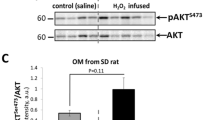Abstract
In antidiuresis, the cells of the renal medulla are exposed to high extracellular concentrations of NaCl and urea. Since urea equilibrates with the intracellular compartment and is known to perturb intracellular macromolecules, high urea concentrations may well disturb the structure and function of cell proteins. Two types of organic substances are believed to counteract the adverse effects of high intracellular urea concentrations: specific organic osmolytes of the trimethylamine family [betaine and glycerophosphorylcholine (GPC)], which accumulate in renal medullary cells during prolonged periods of antidiuresis and cytoprotective heat shock proteins (HSPs), the tissue content of two of which (HSPs 27 and 72) is much higher in the inner medulla than in the iso-osmotic renal cortex. To evaluate the contribution of trimethylamines and HSPs to cytoprotection in the presence of high urea concentrations, the effect of HSP induction and osmolyte accumulation prior to exposure to high urea concentrations was examined in Madin-Darby canine kidney (MDCK) cells. Accumulation of organic osmolytes and synthesis of HSP27 and HSP72 was initiated by hypertonic stress (increasing the osmolality of the medium from 290 to 600 mosmol/kg H2O by NaCl addition). Control, non-conditioned cells remained in the isotonic medium for the same period. Upon subsequent exposure to an additional 600 mM urea in the medium for 24 h, 90% of the osmotically conditioned cells but only 15% of non-conditioned cells survived. The HSP72 and trimethylamine contents of the NaCl-conditioned MDCK cells, but not HSP27 content, correlated positively with cell survival. To separate the effects of organic osmolytes and HSP72, chronically NaCl-adapted MDCK cells were returned to isotonic medium for 1 or 2 days, so depleting them of trimethylamine osmolytes. HSP72, with its longer half life, remained elevated. Subsequent exposure of these cells to 600 mM urea in the medium resulted in about 80% survival. These results suggest that in MDCK cells and probably in the renal medulla, HSP72 and perhaps additional protective factors contribute substantially to the resistance against high urea concentrations.
Similar content being viewed by others
Author information
Authors and Affiliations
Additional information
Received: 9 July 1997 / Received after revision and accepted: 1 October 1997
Rights and permissions
About this article
Cite this article
Neuhofer, W., Müller, E., Burger-Kentischer, A. et al. Pretreatment with hypertonic NaCl protects MDCK cells against high urea concentrations. Pflügers Arch 435, 407–414 (1998). https://doi.org/10.1007/s004240050531
Issue Date:
DOI: https://doi.org/10.1007/s004240050531




